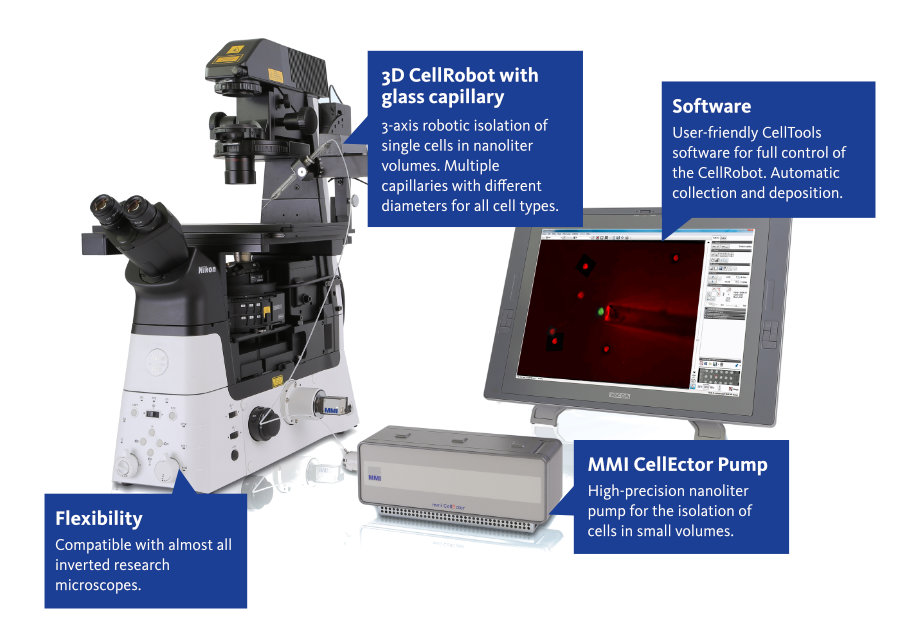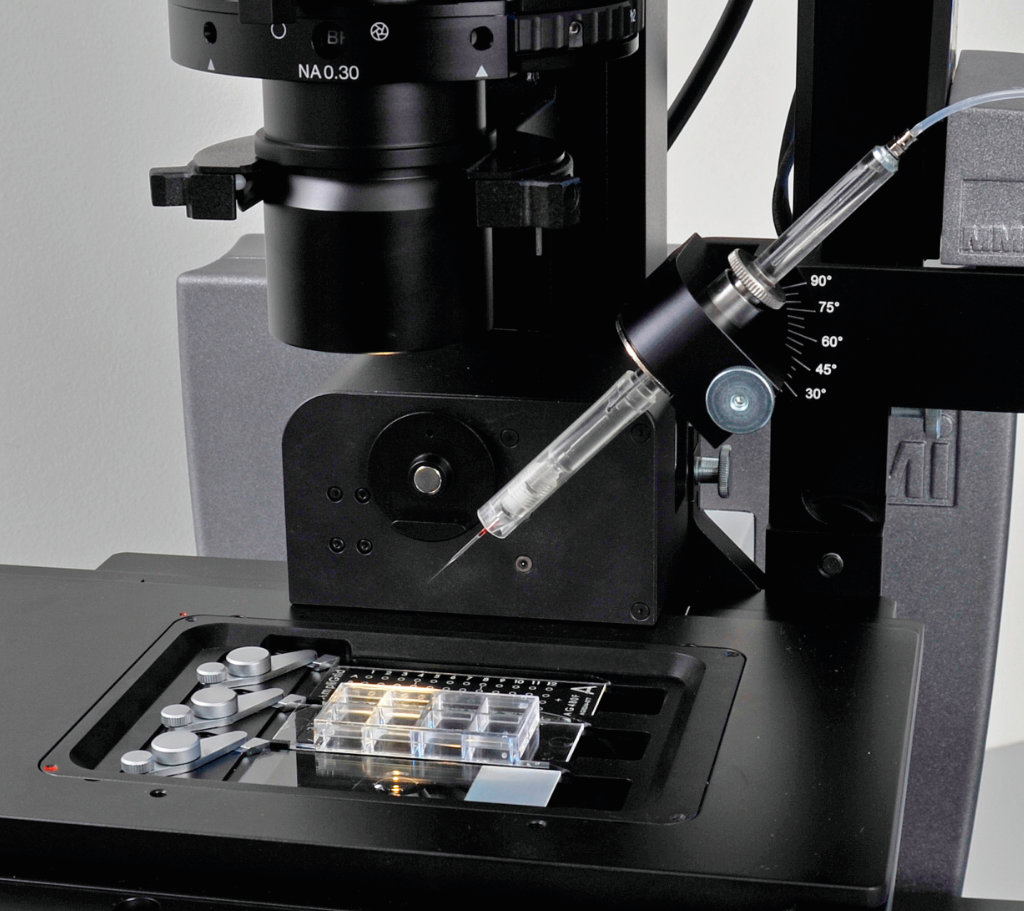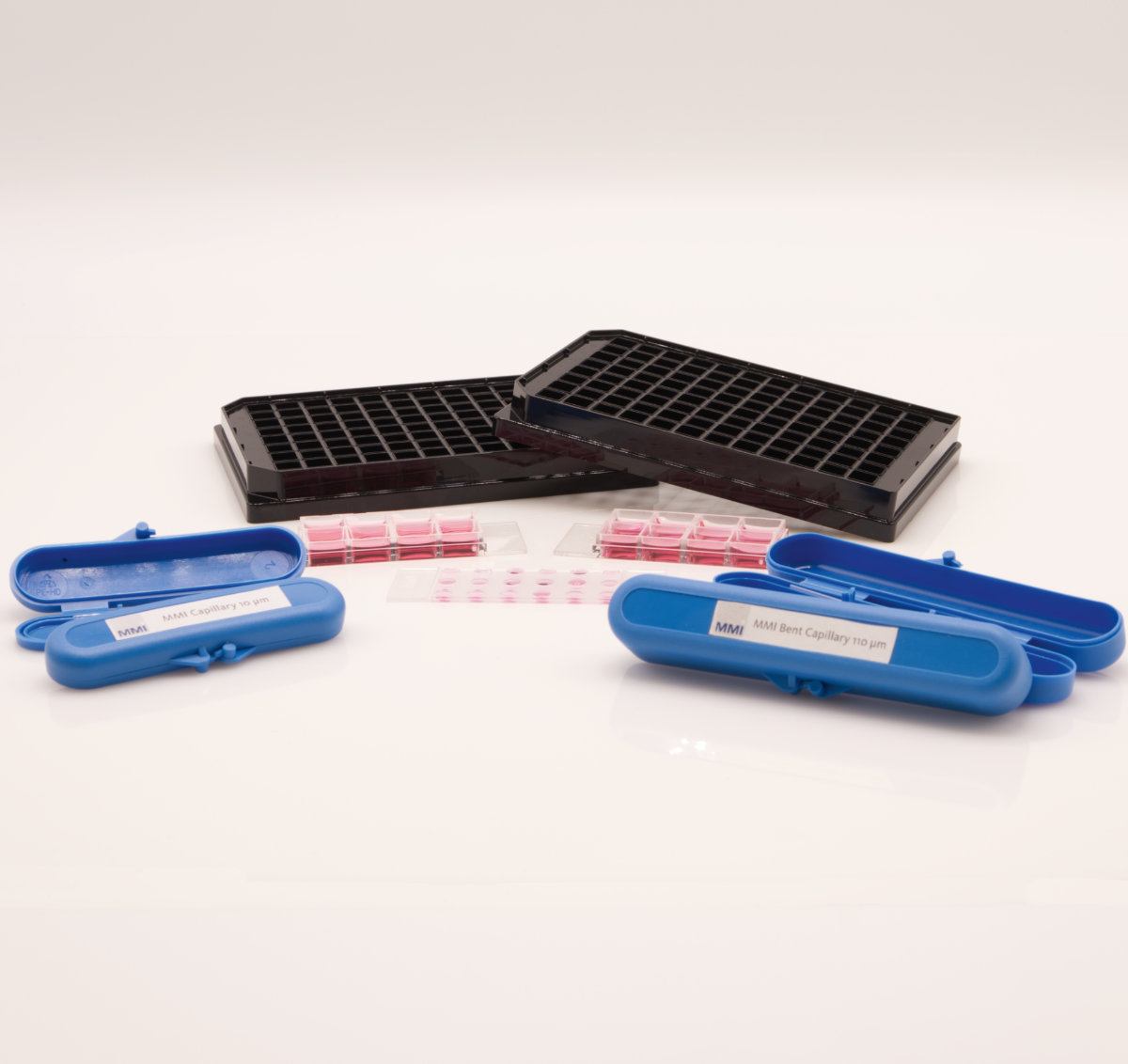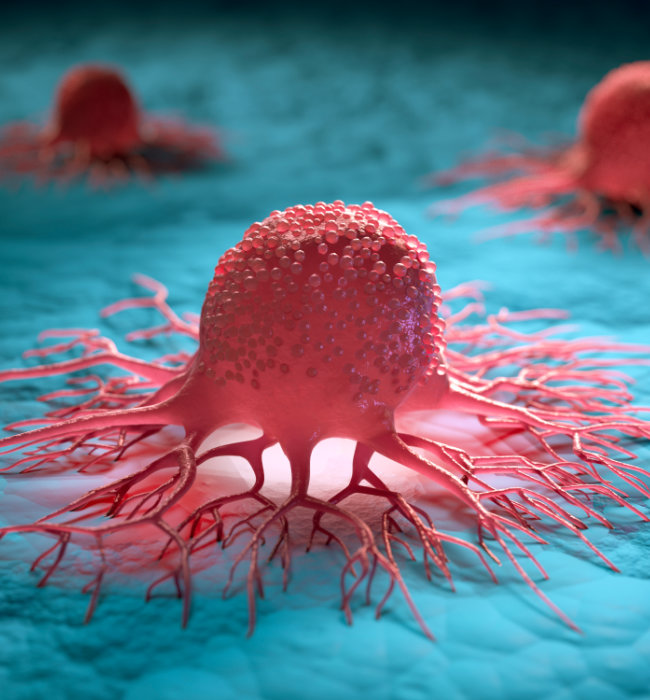Single cell picking like a pro: MMI CellEctor
Cell Picking with the MMI CellEctor is crucial when you need to isolate individual cells (e.g. circulating tumor cells, rare cells, sperm cells etc.) for further analysis or experimentation. The open cell picker platform allows the integration of your own imaging, detection and picking protocol with automated isolation and recognition and is therefore fundamental for many research projects in pathology, oncology and forensics.

Have a look how it works
In the following video you will see how to sort fully automated multiple particles in a 96-well format with the MMI cell picker system. During the process, you have full visual control.
How does the MMI cell picker work?
Identify | Pick | Deposit – Cell Isolation for Pros
Cell picking with the MMI CellEctor gives the user complete control in manual and automated cell identification, acquisition and deposition. The cell picking process is contamination-free and supports a broad range of sample types. The high flexibility of the cell picker enables you to define your own workflow. Just select the wells for cell picking, deposition and rinsing using a wide range of slide-based platforms.
If you have any questions about the CellEctor cell picker, please feel free to contact us
Contact us now
„„Here at the DMSZ (research group VirusInteract) it is our special emphasis to analyze the very early events of virus infection in plant tissue. Thus we first identify the initial point of plant virus infection, isolate this area with the MMI CellCut system and subsequently analyze this sample with a multi-omics approach. The MMI CellCut system is elementary for our research because it enables us to select and investigate even single infected plant nuclei. In addition we use the MMI CellEctor cell picker to collect protoplasts from liquid media to generate new plants from a single cell.”
Nachwuchsgruppe VirusInteract (Dr. Björn Krenz)
Braunschweig, Germany

"At Simfo, we are interested in analyzing molecular profile of circulating tumor cells (CTCs), because CTCs reflect the real status of tumor genotypes. CTCs exhibit high heterogeneity within a patient and for this reason we analyze individual CTCs for KRAS, BRAF and EGFR mutations.
The MMI CellEctor cell picker instrument allows us to precisely select single CTCs from patient samples in order to individually analyze their genomic integrity – an important pre-requisite for our research."
Bayreuth, Germany



















